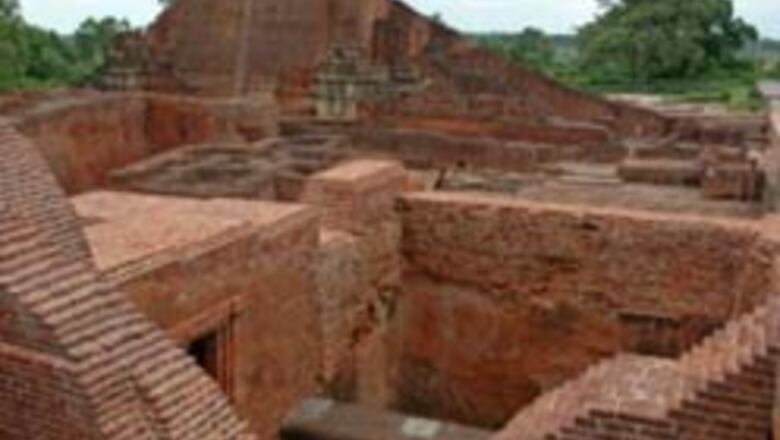
views
Patna Excavation work has started to find the main gateway to Bihar's 2,500-year-old Nalanda University, considered to be one of the world's first residential universities.
A part of the ruins of the ancient university is still standing but its main entrance is yet to be found.
A team of experts from the Archaeological Survey of India (ASI) started excavation work last week at Ghorakatora mound near Giriyak in Nalanda district, about 100 km from here, to find the main gateway.
"The archaeologists discovered a number of antiquities and that was a positive sign. The ASI is likely to solve the mystery," said P.K. Mishra, ASI's superintending archaeologist, Patna circle.
Mishra said that the excavation was expected to throw fresh light on the ancient Nalanda University.
Nalanda, founded in the fifth century AD, is a famous ancient seat of learning.
Though the Buddha visited Nalanda several times, the centre of Buddhist learning shot to fame much later, during the 5th to the 12th centuries.
Hieun Tsang, a famous Chinese scholar, stayed here in the seventh century and left detailed description of the excellence of the education system and purity of monastic life practiced here.
He also gave a vivid account of both the ambience and architecture of this unique university of ancient times.
Tsang stated in his account that the university was spread over 16 sq km. However, till now hardly 1.6 sq km of the ruins of the university has been excavated.
According to ASI, a 1,200-feet high mound - known as Dhamma Khand - is spread over 20 acres. Archaeologists have also discovered a wall under the mound.
The location of the mound - extreme north of the ancient site - and the name of the structure as Dhamma Khand indicate it as the entrance.
Last year, scientists from the Indian Space Research Organisation were asked to help explore the ruins in and around the ancient university.
A year-and-a-half ago, a two-member team of space scientists from the Hyderabad-based National Remote Sensing Agency began fieldwork for satellite imagery exploration.
They reportedly collected data on site settlements and water bodies around the ruins.














Comments
0 comment